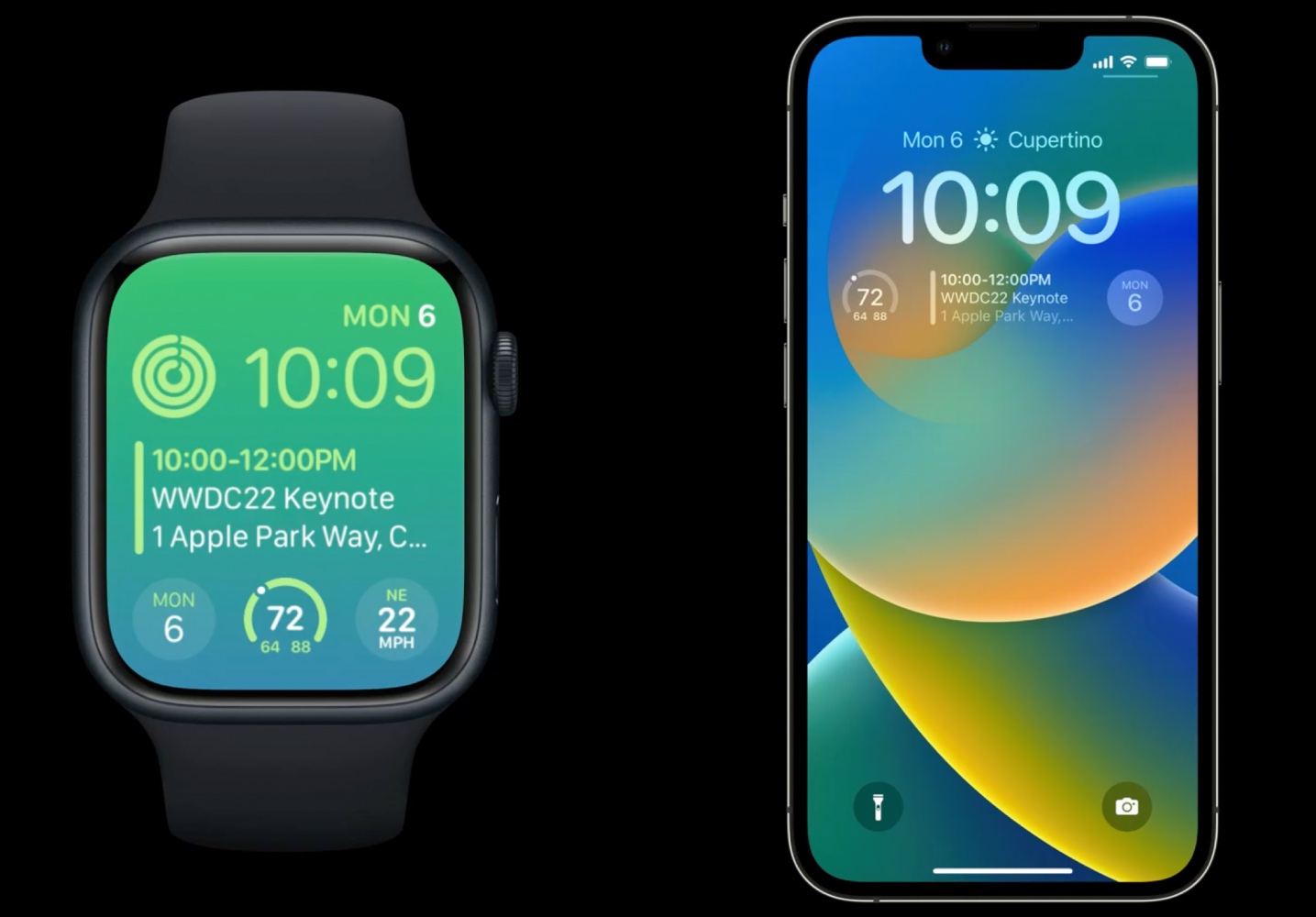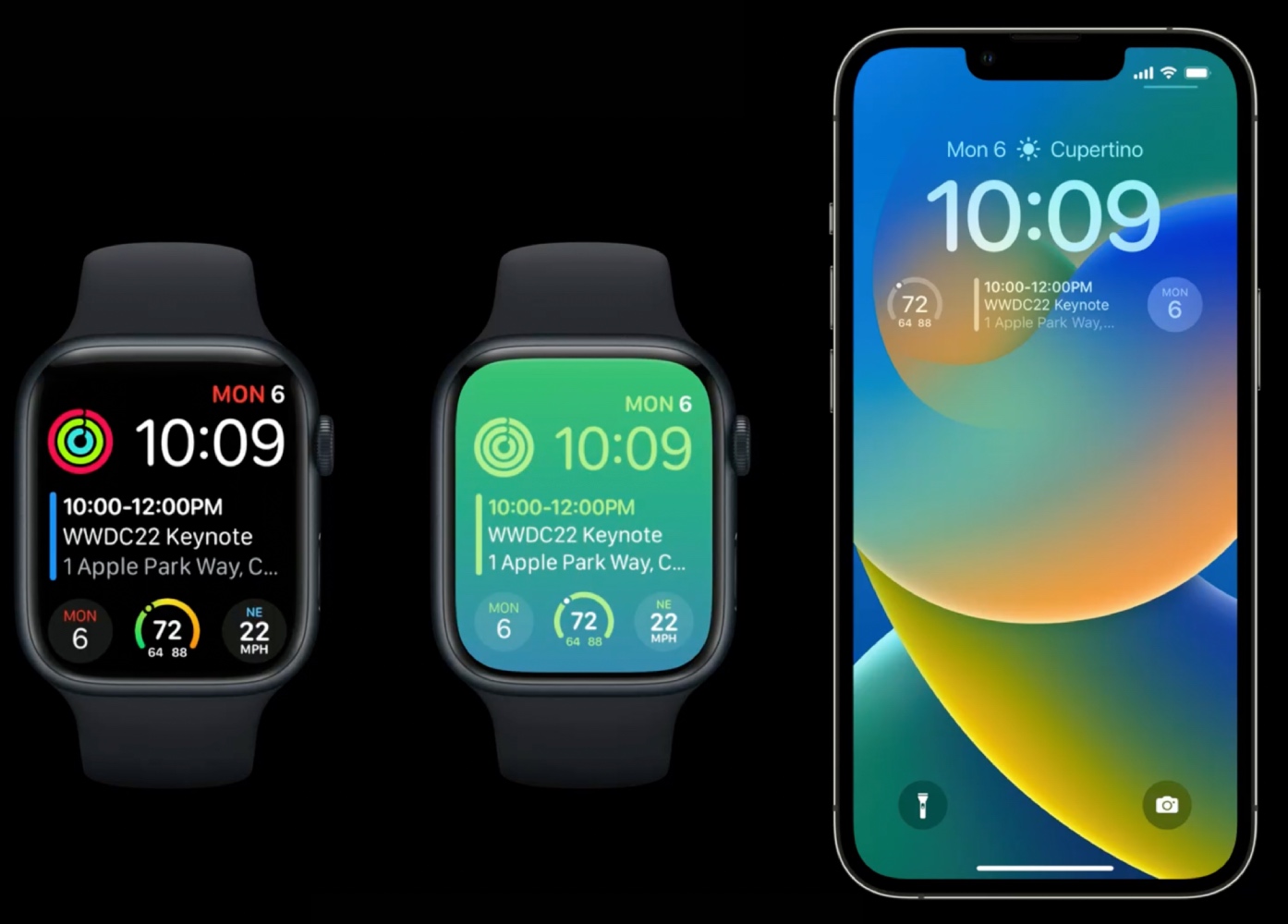Complications and widgets: Reloaded
Description: Our widgets code-along returns as we adventure onto the watchOS and iOS Lock Screen. Learn about the latest improvements to WidgetKit that help power complex complications on watchOS and can help you create Lock Screen widgets for iPhone. We’ll show you how to incorporate the latest SwiftUI views to provide great glanceable data, explore how each platform renders content, and learn how you can customize the design and feel of your content within a widget or complication.
Complication history
- Complications present quick, glanceable information on the watch face
- in watchOS 2, ClockKit enabled you to create your own complications
- in watchOS 5, rich complications were introduced, with graphic colorful content
- in watchOS 7, SwiftUI complications and multiple complications were introduced
- in watchOS 9, complications have been re-imagined and remade with WidgetKit, embracing SwiftUI and bringing the glanceable complication experience to iOS in the form of widgets

New WidgetFamily families
accessoryCircular- A circular widget
- great for brief information, gauges, and progress views
- replaces ClockKit's graphicCircular family
accessoryCorner- watchOS only
- complication in the corner of a watch face in watchOS
accessoryRectangular- A rectangular widget
- can be used to show multiple lines of text or small graphs and charts
- replaces ClockKit graphicRectangular family
accessoryInline- A flat widget that contains a single row of text and an optional image
- present on many faces on watchOS and above the time on iOS LockScreen
Colors

- the system controls the look of accessory family widgets
- three different rendering modes your widget might be shown in (refer to image above):
- full color
- accented
- vibrant
This is exposed via a new widgetRenderingMode environment variable of type WidgetRenderingMode:
struct MyWidgetView: View {
@Environment(\.widgetRenderingMode) var widgetRenderingMode // 👈🏻
var body: some View {
...
}
}
Full color mode
- content is displayed exactly as specified
Accented mode
- your views are split into two groups and colored independently
- the two coloring groups are flatly colored, preserving only their original opacities
- you can tell the system how to group your views with the
.widgetAccentable(_:)view modifier - ...or switch out your content based on the Widget Rendering Mode environment value to look perfect when flattened
VStack(alignment: .leading) {
Text("Headline")
.font(.headline)
.widgetAccentable() // 👈🏻
Text("Body 1")
Text("Body 2")
}.frame(maxWidth: .infinity, alignment: .leading)
- Note that the system can tint your content in a number of ways, some of which are inverted

Vibrant mode
- your views are desaturated then colored appropriately for the Lock Screen background
- the system maps your greyscale content in to a material appearance
- a light source color ends up mostly opaque and brighter
- a dark source color appears as a less prominent blur of the background behind it, with only a slight amount of brightening
- avoid using transparent colors in this mode, instead, use darker colors or black to represent less prominent content while maintaining legibility
AccessoryWidgetBackground
New AccessoryWidgetBackground view, to give a consistent backdrop to widgets that need them:
- takes on different appearances in the various widget rendering modes
- tuned by the system to look right for the style of the face or Lock Screen
- soft transparent view in full color and accented
- black in vibrant mode, which results in a low brightness and full blur
ZStack {
AccessoryWidgetBackground() // 👈🏻
VStack {
Text("MON")
Text("6")
.font(.title)
}
}
 GitHub
GitHub
 zntfdr.dev
zntfdr.dev